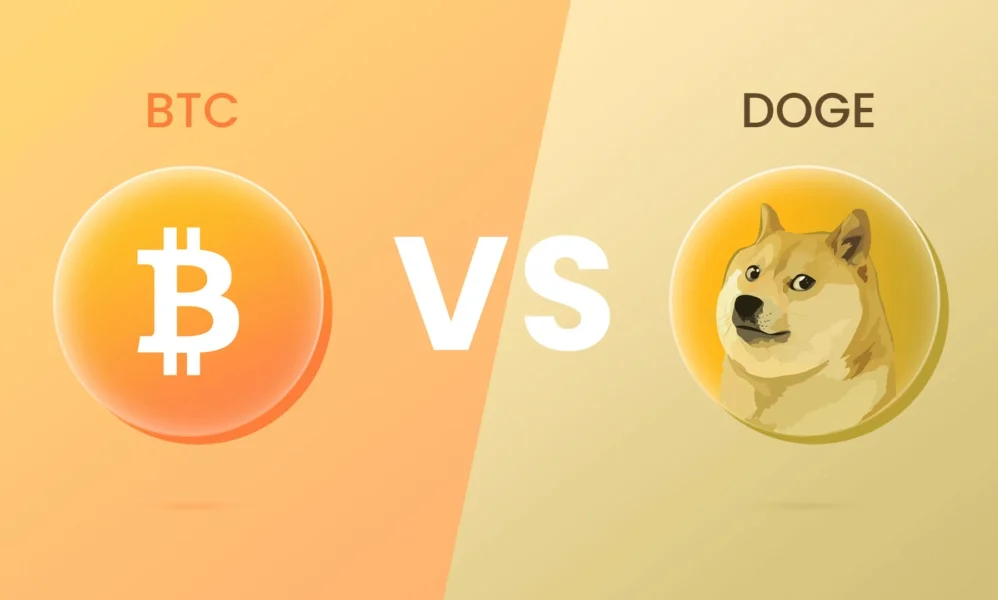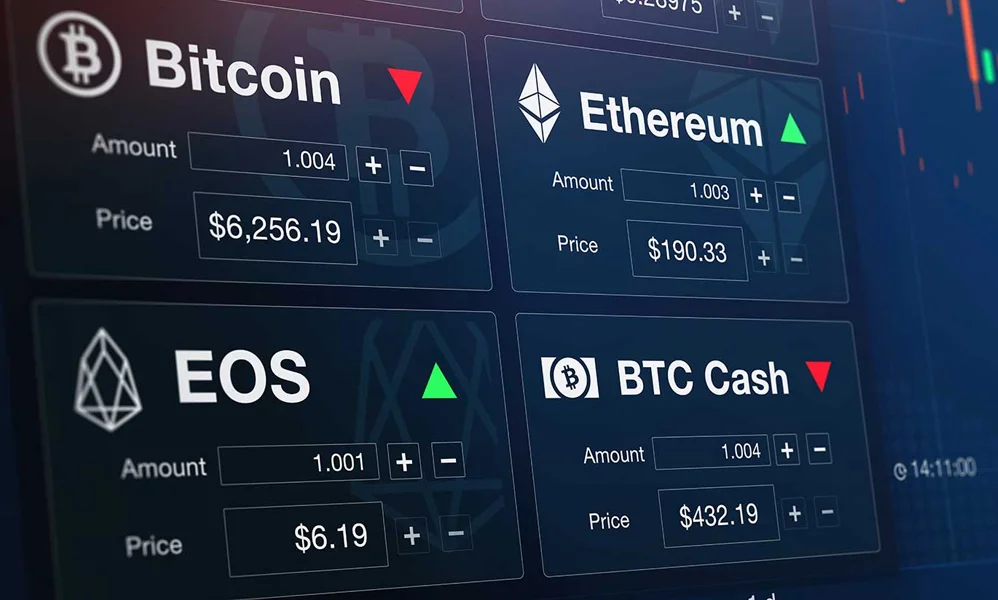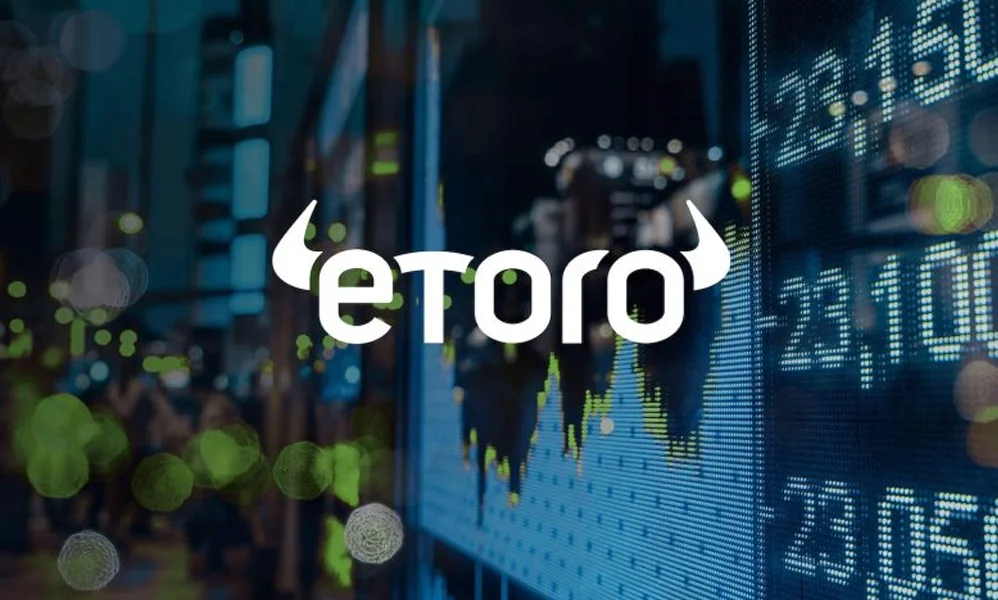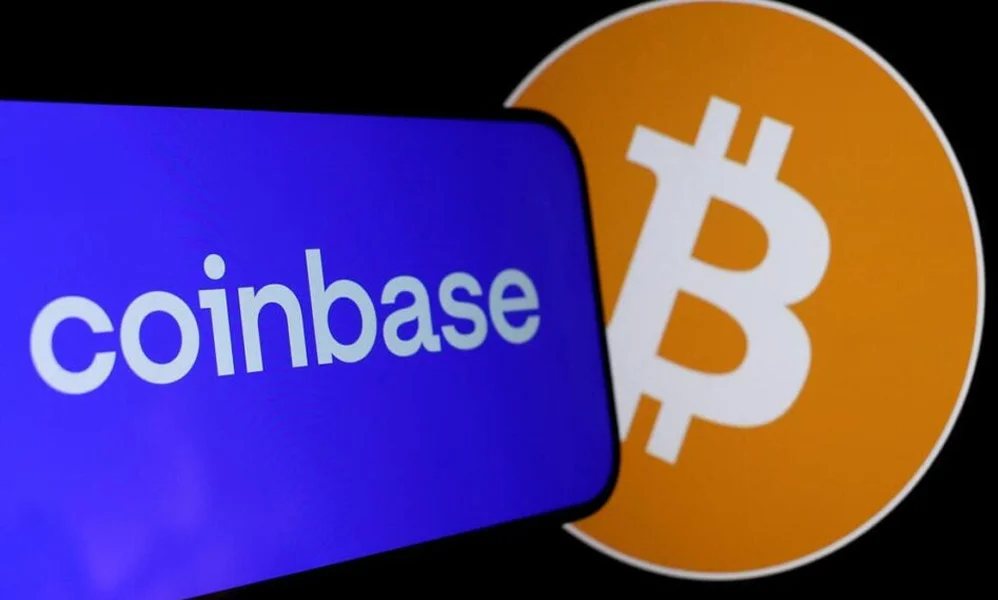Bitcoin and Dogecoin are two different cryptocurrencies. Although they share some similarities, there are significant differences at their core. Bitcoin is the first cryptocurrency, designed to be a decentralized digital currency primarily used for value storage and transactions, with a total supply capped at 21 million coins. In contrast, Dogecoin was originally created as a joke, inspired by the popular "Doge" meme. Dogecoin's design aims to facilitate small transactions, featuring an unlimited supply that allows for more frequent transactions and lower fees.

Differences between Bitcoin and Dogecoin
Technical Foundations
Bitcoin (BTC)
Background: Bitcoin was created in 2009 by an anonymous developer, Satoshi Nakamoto, with the goal of becoming a decentralized and censorship-resistant digital currency for global payments and value storage.
Consensus Mechanism: It uses Proof of Work (PoW), where miners verify transactions by solving complex mathematical problems, ensuring the security and decentralization of the blockchain.
Supply: The total supply of Bitcoin is strictly limited to 21 million coins, making it akin to "digital gold" with deflationary characteristics.
Dogecoin (DOGE)
Background: Dogecoin was launched in 2013 as a meme coin, initially created to satirize the speculative nature of cryptocurrencies. It does not have a serious vision like Bitcoin.
Consensus Mechanism: Dogecoin also uses Proof of Work (PoW), but its algorithm differs from Bitcoin's. It shares some mining resources with Litecoin.
Supply: Unlike Bitcoin's scarcity, Dogecoin has no upper limit, adding 5 billion coins each year, which means it is an inflationary currency.
Use Cases and Positioning
Bitcoin: Its original purpose was to become a digital cash system, but as network congestion and fees increased, it gradually evolved into a means of value storage, similar to "digital gold." Currently, Bitcoin is mostly used as a tool for asset preservation.
Dogecoin: Dogecoin has always been positioned as a fun, community-driven cryptocurrency, widely used for small payments and tips. Due to its lower fees, Dogecoin is used for quick payments in certain scenarios but primarily relies on community engagement for its growth.
Community and Culture
Bitcoin Community: The Bitcoin community is quite serious, focusing on technological advancement, the building of decentralized finance (DeFi), and protecting the integrity of the Bitcoin network.
Dogecoin Community: The Dogecoin community is characterized by a lighthearted and entertaining spirit, emphasizing friendliness and charity. Many projects and activities associated with Dogecoin (like donations to the Jamaican bobsled team) reflect the community's sense of humor and participation.
Market Performance
Bitcoin: Its market capitalization and influence far exceed those of other cryptocurrencies, enjoying significant mainstream recognition. Many institutions and countries (like El Salvador) view Bitcoin as a viable investment and payment tool.
Dogecoin: Its market performance is relatively volatile and heavily influenced by social media and public figures (like Elon Musk), often experiencing drastic price fluctuations due to trending events.
Future Development Trends
Future Development Trends for Bitcoin
Technical Aspects
The development of the Lightning Network will significantly enhance Bitcoin's transaction speed and scalability, reducing transaction costs and making it more suitable for everyday payments.
Continued participation from institutional investors will drive Bitcoin's mainstream adoption, reinforcing its role as a value storage tool.
Global regulation may become more unified, with some countries potentially following El Salvador's lead in adopting Bitcoin as legal tender, particularly in regions with unstable financial systems.
Market Prospects
Due to its supply scarcity and its role as "digital gold," Bitcoin may continue to maintain its leadership position in the cryptocurrency market over the long term.
Risks: Tightening global government regulations on cryptocurrencies and energy consumption issues could pose major challenges for Bitcoin in the future.
Future Development Trends for Dogecoin
Technical Aspects
Dogecoin's development team is relatively small, and technological upgrades are slow. For Dogecoin to continue evolving, it may need to optimize for scalability and efficiency or collaborate with other blockchain projects.
Currently, support from public figures like Elon Musk remains a key factor in Dogecoin's visibility, but this also makes its price susceptible to market sentiment, leading to high volatility.
Market Prospects
Strong Community Drive: The future of Dogecoin largely depends on the continued activity of its community. If the community maintains its current engagement and enthusiasm, Dogecoin could still play a role in small payments and charitable projects.
Risks: Due to Dogecoin's lack of supply limits, its inflationary nature makes it less suitable for long-term value preservation, and its price stability over the long term is questionable.
Editor's Comments
Bitcoin: As "digital gold," its future development will primarily revolve around its role as a value storage tool, likely stabilizing and mainstreaming further with increased institutional participation.
Dogecoin: More of a community-driven project, its future development may rely heavily on its community culture and the influence of public figures, but limited technological advancement and application scenarios may restrict its long-term value.
Related Articles

Where is the best Bitcoin exchange?
Choosing the right Bitcoin exchange depends on several factors, including security, fees, liquidity, user experience, and legal regulations in your location. Below is a detailed analysis of some of the top global Bitcoin exchanges to help you make an informed decision.
October 10, 2024
Future Development Trends of Bitcoin: Increased Global Acceptance and Market Outlook
The future development trends of Bitcoin may focus on several aspects: as global acceptance of digital assets increases, countries will establish clear regulatory policies to promote its legalization
October 9, 2024
How to Buy Bitcoin on the Etoro App?
The most basic way to buy Bitcoin on the Etoro app is to first log into your Etoro account, then search for "BTC" or "Bitcoin" on the market page, and select the Bitcoin trading pair. Next, click the "Trade" button, enter the amount or quantity you want to purchase, set the stop loss and take profit levels (optional), and finally confirm and execute the trade. Please note that Etoro offers CFD trading rather than direct cryptocurrency purchases.
September 27, 2024
What is Fractal Bitcoin?
Fractal Bitcoin is emerging as a promising scalability solution that is gaining widespread attention. It constructs a multi-layered network structure through recursive virtualization technology, not only enhancing the scalability of Bitcoin but also ensuring a secure connection with the main network.
September 26, 2024
Coinbase Launches cbBTC: New Competition and Questions Arise in the Wrapped Bitcoin Market
With Wrapped Bitcoin (WBTC) facing a trust crisis, various competitive products have emerged in the market, among which Coinbase Wrapped BTC (cbBTC), launched by the largest cryptocurrency exchange in
September 25, 2024
